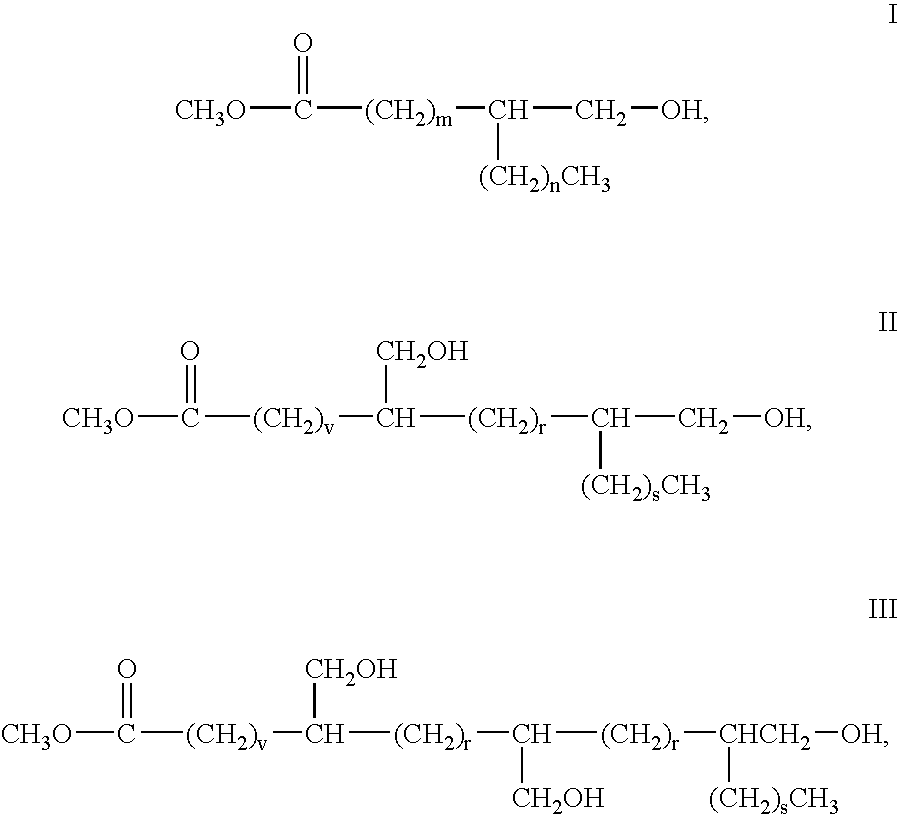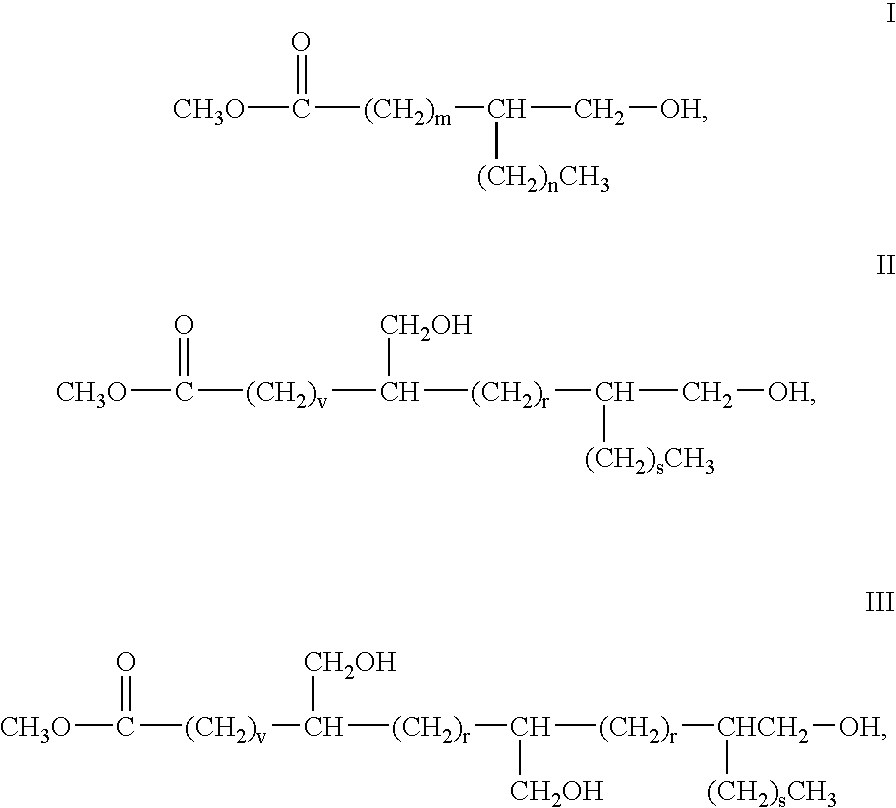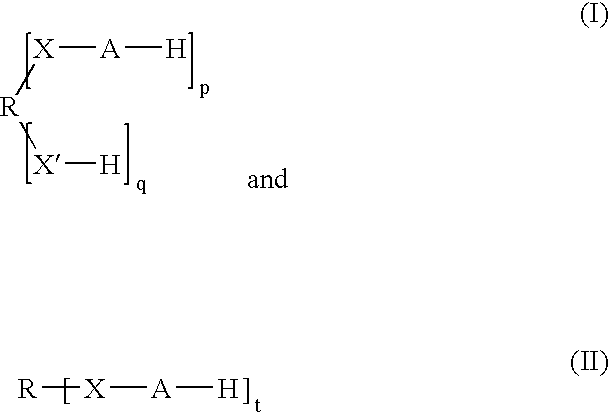Vegetable oil based polyols and polyurethanes made therefrom
- Summary
- Abstract
- Description
- Claims
- Application Information
AI Technical Summary
Benefits of technology
Problems solved by technology
Method used
Image
Examples
examples 1-27
Methods for Producing Polyols from Vegetable Oil Based Fatty Acid Methyl Esters
[0055] Hydroxymethylated fatty acid methyl esters of soybean oil and 9,(10)-hydroxymethyl stearate (from methyl oleate) are produced according to the procedure described in concurrently filed application titled “ALDEHYDE AND ALCOHOL COMPOSITIONS DERIVED FROM SEED OILS,” having inventors Donald Morrison, et al., attorney docket number 63104 described previously.
Glycerol was obtained from the Sigma-Aldrich Chemical Company (CAS# [56-81-51) and distilled under vacuum at 20 mm / 183° C. Distilled glycerol was then stored under nitrogen until used.
CEI-625 is a glycerol initiated EO polyol with a number average molecular weight of 625. It is produced at The Dow Chemical Company.
Trimethylolpropane [77-99-6] is obtained from the Sigma-Aldrich Chemical Co.
1,6-hexanediol [629-11-8] is obtained from the Sigma-Aldrich Chemical Co.
CEI-1200 is a glycerol initiated EO polyol with a number average molecular weig...
examples 1-17
A General Polymerization Procedure for Seed Oil Polyols Produced from Fatty Acid Methyl Esters
[0057] Hydroxymethylated fatty acid methyl ester monomer was transferred into a three-necked reaction flask between 500 ml and 5000 ml in capacity, the choice of which is commonly known to those skilled in the art and is dependent on the amount of starting materials used. The reactor was equipped with a mechanical stirrer, packed condenser, nitrogen purge, heating mantle with thermowatch and a thermometer. A vacuum line equipped with a dry ice trap and vacuum regulator was attached. Initiator and monomer were added and the contents of the reactor stirred and degassed while heating to 50 degrees under 20 torr vacuum. Once the temperature was stable, catalyst was added and the temperature was increased to the final specified reaction temperature. The initial setting for the vacuum was started at 100 torr and the pressure was decreased slowly to 5-20 torr. Heating was continued at the specifi...
examples 1-10
Polyols Produced from 9(10)-Hydroxymethyl Stearate
[0059] Polyols were produced from 9,(10)-hydroxymethyl stearate using the specified initiator and catalyst using the above procedure and as detailed in the below Table I.
TABLE IExamples 1-10 Polyol Properties and Run Conditions:Vis-M / ITempRuncosityExampleInitiatorInitiatormoleCatalyst(degTime(cP at AcidityHydroxyl#(moles)Nameratio(PPM)C.)(hr)25 C.)(meq / g)percentHEWMpMnMwMzPD10.483Glycerol8.38Sn(II)20527 2600.01454.209404430786121018411.5399620.2463Trimethylol1.5Sn(II)21014——1.4911407863412510,22219,1112.48propane9730.03371,4-Hexanediol9.04Sn(II)21014——1.6210478617508813,217252932.60240040.757CEI-12004.68Sn(II)205434100.01122.08881442002937442761921.51100050.422CEI-6256.99Sn(II)1951261000.00642.367471852812847482370351.69122760.6223CEI-6256.51Sn(II)2052429200.001681.99985054403118529574731.6982101270.6243CEI-6256.48Ti(IV)205345400.00302.12380144512893452463401.56101880.6234CEI-6256.54Sn(IV)205124200.00231.83792538032629359145731.37...
PUM
| Property | Measurement | Unit |
|---|---|---|
| Fraction | aaaaa | aaaaa |
| Fraction | aaaaa | aaaaa |
| Percent by mass | aaaaa | aaaaa |
Abstract
Description
Claims
Application Information
 Login to View More
Login to View More - R&D
- Intellectual Property
- Life Sciences
- Materials
- Tech Scout
- Unparalleled Data Quality
- Higher Quality Content
- 60% Fewer Hallucinations
Browse by: Latest US Patents, China's latest patents, Technical Efficacy Thesaurus, Application Domain, Technology Topic, Popular Technical Reports.
© 2025 PatSnap. All rights reserved.Legal|Privacy policy|Modern Slavery Act Transparency Statement|Sitemap|About US| Contact US: help@patsnap.com



